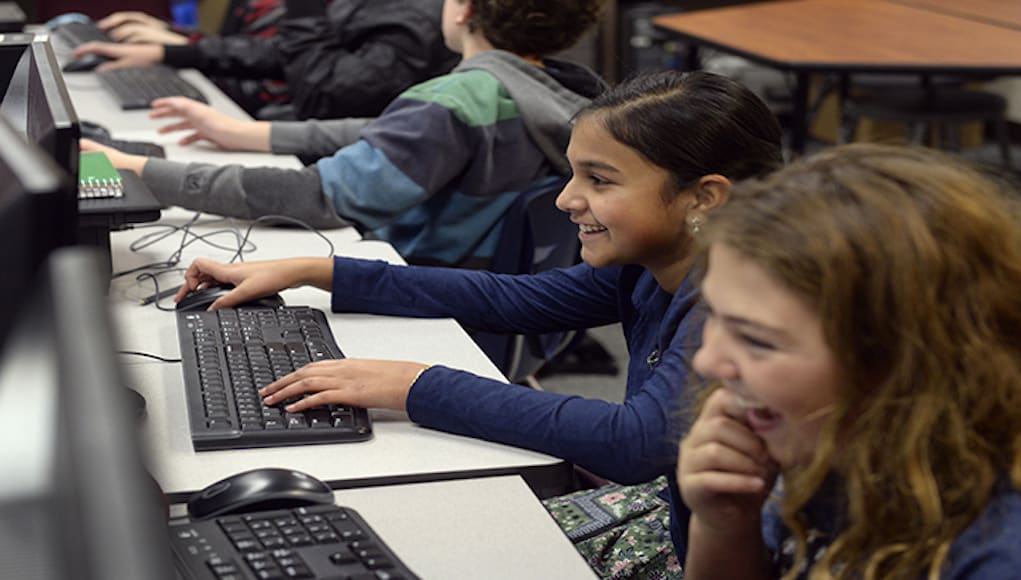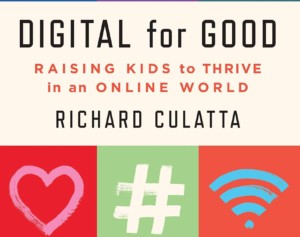Changing the Discussion: From Screen Time to Digital Equity

By: Beth Holland and Matthew Hiefield
Every few months, a new cycle of screen time stories permeate the media. For example, in 2018, a series of columns produced by the New York Times garnered national attention. One article presented a narrative that Silicon Valley elites recognize the purported dangers of screens and consequently place their own children in analog-only schools, denying them access to the media that they had actually created. Another argued that The Digital Gap Between Rich and Poor Kids Is Not What We Expected. It described the backlash of parents in a middle-class suburb outside of Kansas City, MO, to increased technology and juxtaposed their concerns against a Common Sense Media Census reporting that lower-income teens spend more time on devices than their affluent peers. Anecdotal evidence from a single psychologist supported this claim and described his work with teens from lower-income households whose parents were not aware of the potential adverse effects of screen time.
However, as Anya Kamanetz from NPR Education explains in her article with the Columbia Journalism Review, this over-simplified narrative from the Times successfully stoked the fears of readers while ignoring the nuance and complexity of the topic. More recently, calls to ban cellphones in schools have resurfaced as a response to concerns about screen time as well as teachers’ frustrations with distraction, off-task behavior, and “Googling” answers on assessments. And yet, by vilifying screens, and proclaiming offline opportunities as superior to those that may happen online, articles such as these stand to create greater challenges of digital equity—particularly for students in underserved and under-resourced communities.
Changing the Conversation
Too often, those who advocate for eliminating or highly restricting access to technology come from more affluent and well-educated communities. Like the families in Silicon Valley who enroll their children in private, play-based schools, these adults have access to resources and the potential to create in-person opportunities to enrich their children’s learning. This could mean that their children have multiple devices at home, plenty of untethered online access, and the opportunity to participate in enrichment activities like organized sports, arts, and field trips. In these instances, eliminating screen time at school may serve as a way to counterbalance the amount of screen time that is allowed at home. Similarly, limiting access at home can be a way to further engage children in activities that the parents perceive as more valuable. Across these situations a common theme emerges: the assumption that resources and opportunities exist.
For students who may not have access to these same benefits, digital technology has the potential to create new opportunity. According to a 2014 RAND study, children from low-income households may lack both access to technology as well as the opportunity to develop critical literacy, communication, and collaboration skills. A 2016 report from the Joan Ganz Cooney Center at Sesame Street elaborates on this finding and explains that when students only have access to a smart phone or mobile device at home, they are less likely to go online to pursue an interest or engage in a creative endeavor. Rhetoric about banning devices and advocating against screen time—particularly in school—then creates greater inequity.
Educators strive to provide all students with engaging activities (both with and without technology), but not all students have access to these opportunities outside of the classroom. Further, as explained by S. Craig Watkins and Alexander Cho in The Digital Edge: How Black and Latino Youth Navigate Digital Inequality, denying students access to their devices in school can alienate and discourage them from learning because it removes the tools that they find most valuable. For some students, technology is an essential resource. It allows them access to multiple representations of content, enables them to keep all of their notes and readings at their fingertips, provides instant access to dictionaries and translators, and supports their use of accessibility features like text-to-speech, dictation, and word prediction.
Outside of school, particularly when students may not be able to participate in other enrichment activities, digital technologies can help to connect them with peers, explore different interests, and engage in different creative endeavors. Again, vilifying screens discredits these endeavors.
A More Nuanced Understanding
Digital Equity issues can emerge both between communities and within schools. Students in one class may benefit from a more universally accessible experience that encourages them to develop as learners. They have access to content both digitally and in analog form, can use a variety of media to express their understanding and construct new knowledge, and benefit from a variety of experiences that encourage them to communicate and collaborate. When a teacher bans mobile devices and does not embrace opportunities supported by new tools, their students may feel further disconnected from learning and disadvantaged by the curriculum. In this instance, lack of technology can magnify inequity, remove access to meaningful opportunities, and actually punish the most vulnerable students—especially students of color and those living in communities that lack resources outside of school.
When paired with the right intentions and instructional strategies, however, technology can magnify equity, spur creativity, spark innovation, and create learning opportunities that are both affirming and engaging. Ultimately, arguments about restricting technology should focus more on learning and opportunity than generic screen time. Similarly, although calls for banning devices can seem attractive, especially when rooted in frustration, they need to be carefully examined from the perspective of equity. Rather than become mired in whether or not to allow screen time, or for how long, conversations should address how access might increase equity and opportunity to empower ALL students—not just the ones with rich access at home and an abundance of family resources.
For more, see:
- Universal Design for Learning as a Framework for Digital Equity
- Tackling Digital Equity in the Classroom – Strategies for Teachers
- The Innovation Inequity Paradox
Stay in-the-know with innovations in learning by signing up for the weekly Smart Update.
Matt Hiefield is a digital curriculum specialist for Beaverton School District with a passion for investigating digital equity issues. He serves as an ISTE Digital Equity PLN Leader and as a CoSN Digital Equity Advisory Council Member. Connect with Matt on Twitter: @MattHiefield







0 Comments
Leave a Comment
Your email address will not be published. All fields are required.